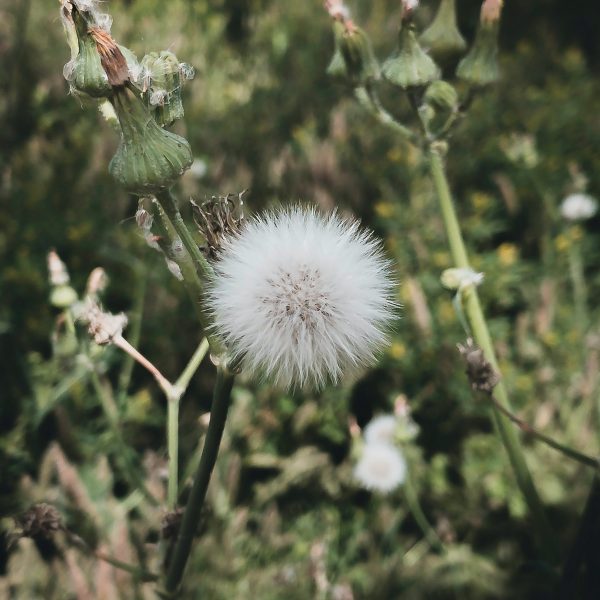Do you suffer from PMS (Premenstrual Syndrome) or PMDD (Premenstrual dysphoric disorder)? There is no question that PMS and PMDD are both major challenges for many women. So, what’s a girl to do?
What is PMS?
Up to 40% of women experience extreme PMS symptoms regularly. PMS consists of a host of disrupting symptoms that begin around the 7-10 days leading up to menstruation. Years ago, doctors considered PMS largely an emotional problem. While it holds true that PMS increases anxiety and depression for many women, today we know PMS also includes physical symptoms that affect quality of life.
Main types of PMS to watch for
Health experts now recognize 5 main types of PMS:
- Type A- Anxiety. It’s related to estrogen dominance and imbalanced progesterone. You may experience your period early and it could contain many clots.
- Type C- Food Cravings. This type is believed to affect an astounding 50% of women, and is traced back to imbalanced insulin and blood sugar levels.
- Type D- Depression. We often see this type in women with low body weight or who are going through perimenopause. Declining estrogen, unbalanced progesterone and low serotonin are believed to be contributors.
- Type H– Hyper Hydration (bloating/breast tenderness). High salt intake and poor lymph flow are usually involved.
- Type P- Pain. This type is associated with increased cramps, inflammation and sensitivity throughout the body in the week before your period.
How Is PMDD Different From PMS?
PMDD (Premenstrual Dysphoric Disorder) includes the basic symptoms of PMS (bloating, cravings, fatigue, breast tenderness, etc.), but is also characterized by at least one of the following severe symptoms:
- Marked sadness, hopelessness
- High anxiety and nervous tension
- Extreme mood changes
- Intense irritability or increased anger
- Suicide or self-harm thoughts
Researchers are not sure why some women have PMDD and others don’t. It’s theorized that mood disorders like anxiety or depression play a role, yet not every woman with PMDD has a history of mood disorders. Newer research finds PMDD is associated with abnormal levels of many hormones, including beta-endorphins linked to pain during the entire month.
The Gia Allemand Foundation, a nonprofit organization advocating for the prevention, treatment, and research of premenstrual dysphoric disorder (PMDD) shares, “An estimated 3 – 8% of women of reproductive age have PMDD [That’s 5,000,000 women in the U.S. alone]. This number does not account for missed or misdiagnosis nor women whose ovulatory cycle is suppressed by hormonal, chemical, or surgical means. Criteria for diagnosis is set by The American Psychological Association (APA) and The International Society for Premenstrual Disorders (ISPMD).”
Women we speak to with PMDD often feel dismissed by their doctors and, sadly, many go mis- or undiagnosed, but this is beginning to change. If you don’t get the support you need, seek out a new doctor or natural health professional. For PMDD, following a complete natural health program – eating a Fertility Diet, employing herbs, nutritional supplements and natural therapies, daily exercise, and stress reduction – and having consistent support is the best choice! Some women report seed cycling reduces their symptoms.
Finding Solutions That Work for You
While the research into PMS and PMDD is promising, I find it hard to pigeonhole either into a neat diagnostic box for every woman. Some women experience fluctuations in symptoms and severity of symptoms month after month after month. Your symptoms could shift with age, stress, and lifestyle factors, too.
For balanced hormones, optimal fertility, and less PMS:
- Follow a Fertility Diet, eliminating known triggers of inflammation (processed foods, caffeine, alcohol, dairy, gluten).
- Learn more about the biphasic use of herbs and an herbal formula like FertiliCare.
- If you have PMS or PMDD and blood sugar imbalance, elevated androgens, and overall hormonal imbalance, dietary changes along with an herbal blend like Harmonize Formula may work best.
- Try to exercise as often as you can. A daily walk is great!
- Find tools to help you manage your emotional symptoms and stress.
Important: It’s easy to be tempted to make unhealthy choices during PMS week, but do your best to resist. Watch out for stressors like excess caffeine, refined sugar and carbohydrates, and alcohol. Research and our own experience show these foods and lifestyle choices clearly aggravate symptoms for many women.
Lifestyle and dietary changes can make a huge difference if you’re dealing with PMS or PMDD. No one wants to feel miserable for a week or more of each month. I know making adjustments to your normal routine may be tough at first, but most women find the rewards are well worth it.
Learn more:
PMS: 5 Natural Ways to Feel Better Now
Video: Emotional Health – Let’s Talk About PMS
DIY Therapeutic Bath for PMS
- Premenstrual dysphoric disorder: MedlinePlus Medical Encyclopedia. (n.d.). Retrieved from: https://medlineplus.gov/ency/article/007193.htm
- Premenstrual dysphoric disorder: Different from PMS? (2018). Retrieved from: https://www.mayoclinic.org/diseases-conditions/premenstrual-syndrome/expert-answers/pmdd/faq-20058315
- Which Type of PMS Are You? (2018). Retrieved from: http://www.healthyeatingandliving.ca/post/which-type-of-pms-are-you
- Romm, A. (2013, May). PMS: Getting Your Hormones in Balance So Your Period is Not A Curse! Retrieved from: https://avivaromm.com/pms/
- Briden, L. (July 1, 2017). Why I Ask Some Patients to Quit Sugar (and What I Mean by Sugar). Retrieved from: https://www.larabriden.com/quit-sugar-and-what-i-mean-by-sugar/
- Rossignol, A.M. and Bonnlander, H. (1991, Feb.). Prevalence and severity of the premenstrual syndrome. Effects of foods and beverages that are sweet or high in sugar content. Journal of Reproductive Medicine; 36(2):131-6. Retrieved from: https://www.ncbi.nlm.nih.gov/pubmed/2010896
- Pirisi, A. (2000, July). PMS: New Relief? Retrieved from: https://www.psychologytoday.com/us/articles/200007/pms-new-relief
- Women & PMDD. (n.d.). Retrieved from: https://giaallemandfoundation.org/facts-and-figures/





